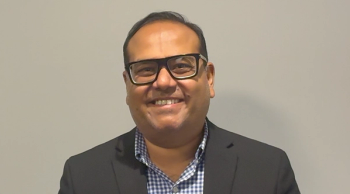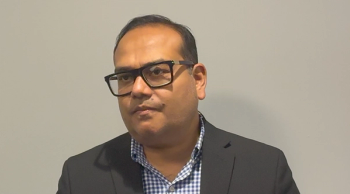
Oncology NEWS International
- Oncology NEWS International Vol 4 No 4
- Volume 4
- Issue 4
Studies Explore Optimal Treatment for DCIS, Markers for High Recurrence Risk
SAN ANTONIO--Searches for high-risk markers may ultimately point the way toward the optimal use of breast-conserving surgery for ductal carcinoma in situ (DCIS); early findings from one study, for example, suggest that a family history of breast cancer may militate against such surgery.
SAN ANTONIO--Searches for high-risk markers may ultimately pointthe way toward the optimal use of breast-conserving surgery forductal carcinoma in situ (DCIS); early findings from one study,for example, suggest that a family history of breast cancer maymilitate against such surgery.
Breast-conserving surgery offers a high degree of local controlfor DCIS, but questions remain about long-term risks and optimalcandidates, Jay R. Harris, MD, said at a plenary session of theSan Antonio Breast Cancer Symposium. The risk of recurrence afterconservative surgery for DCIS appears slightly increased, andhalf the recurrences will be invasive, he said. A critical unresolvedissue is the salvage rate for recurrences.
"We need more long-term data to know exactly what the additionalrisk is with breast conservation," said Dr. Harris, professorof radiation oncology, Harvard Medical School. "Maybe weneed to refocus our energies and try to separate out those high-riskDCIS patients who need to be treated aggressively."
As an example, he cited a Harvard study of angiogenesis in DCIS.About a third of 55 consecutive patients had one of two distinctpatterns of vessel proliferation: a diffuse pattern and a patternof "vascular cuffing" around the involved duct. "It'spossible that one or both of these patterns are predictive ofa more aggressive natural history," Dr. Harris commented.
Family History as a Risk Factor
Family history has emerged unexpectedly as a potential risk factorfor recurrence among women treated conservatively for DCIS. Inan ongoing study at Harvard, 17 patients had a family historyof breast cancer. Four have had recurrent disease, and in allfour cases, the recurrence has been invasive.
By comparison, disease has recurred in three of 58 women withouta family history of breast cancer, and only one of the recurrenceswas invasive.
The family history data were collected from patients' medicalrecords and not documented in any systematic fashion, Dr. Harrissaid, so the implications of the observations for clinical practicemay not yet be clear.
"The family history finding is very provocative but not somethingthat physicians should begin applying in their practices rightaway," Dr. Harris told Oncology News International afterhis presentation. "I'm not sure of the significance of thefinding on the basis of this one study, and further studies arerequired to verify this."
Comedo Histology
Aside from the desire to identify high-risk patients, questionsremain about the best approach to conservative therapy. Some evidencesuggests that DCIS of comedo histologic subtype carries a higherrisk of recurrence when managed by excision alone, Dr. Harrissaid in his talk. Wider excisions and removal of more tissue appearto produce better results.
In a poster presentation at the symposium, investigators fromColumbia-Presbyterian Medical Center reported that comedo histologywas the strongest predictor of breast cancer recurrence in a retrospectiveanalysis of 59 women with DCIS.
A total of 31 women had comedo histology, and eight women (26%)had recurrences, said Alison Estabrook, MD, chief of breast surgery.In contrast, two (7%) of 28 women with noncomedo histology hadrecurrences.
Is Radiotherapy Needed?
In the Columbia-Presbyterian study, use of radiotherapy had noimpact on recurrence risk. Five of 17 irradiated patients hadrecurrences, compared with 5 of 42 who had breast-conserving surgeryalone, Dr. Estabrook said.
Dr. Harris believes that the role of radiotherapy in DCIS patientsundergoing breast-conserving surgery has yet to be decided. Excisionfollowed by radiotherapy significantly reduced the incidence ofipsilateral events and invasive recurrence, compared with excisionalone, among 1,600 randomized DCIS patients in the National SurgicalAdjuvant Breast Project (NSABP) (N Engl J Med 328:1581-1586, 1993).
Subgroup analyses, however, have not been reported, and only 20%of the women had magnification views, which Dr. Harris considersessential for women who undergo breast conservation.
"The study clearly showed a benefit for radiotherapy,"he said. "But the researchers did not identify patients whoare adequately treated with conservative surgery alone, and Iknow such patients exist, nor did the study identify patientswho would be better treated with mastectomy."
Overall Risk of Recurrence
At Harvard, the decision on radiotherapy is deferred pending resultsof re-excision, which is performed on nearly all patients whohave localized lesions and opt for breast conserving-surgery.Patients with clearly negative margins are followed by observation.Radiotherapy is employed if the margins are positive or close.
Dr. Harris postulated that the overall risk of recurrence afterconservative treatment is 10%, as was the case in a recent studyfrom Sweden (see below) and that the risk of invasive recurrenceis 5% over 10 years. Assuming a one third mortality for patientswith invasive cancer, the mortality risk with conservative therapyis about 2%, compared with 1% to 2% for mastectomy.
"For invasive cancer, breast conservation and mastectomyprovide equivalent survival," Dr. Harris said. "Is thesame true for DCIS? We don't know. I suspect the results willnot be exactly the same because mastectomy is being used as aprophylactic measure."
The available evidence suggests that any increased risk of breastconservation compared to mastectomy will be small, he added.
In a presentation during the poster session on DCIS at the SanAntonio symposium, Lars-Gunnar Arnesson, MD, an oncologist atUniversity Hospital, Linköping, Sweden, reported on 175 Swedishwomen followed for up to 15 years (median, 62 months) after treatmentfor DCIS. The study found that lumpectomy without radiotherapyresulted in a 10% rate of recurrence.
Nine of 18 recurrences were invasive, and all of the invasiverelapses were stage I tumors, he said. The risk of recurrencewas unrelated to lesion size, histology, location, or other clinicaland demographic factors, he said.
Two Distinct Periods of Recurrence
For all relapses, the median time to recurrence was 35 months.However, two distinct periods of recurrence have emerged fromthe ongoing study: one at 3 years and another at 8 to 10 years.
Articles in this issue
over 30 years ago
First Results of Avicidin Trialsover 30 years ago
Chemo Patients Often Develop Menstrual Irregularitiesover 30 years ago
Growth Factor Receptor Blockade Moving From Laboratory to Clinicover 30 years ago
Controlled-Release AZT Gets FDA Go-Ahead for New Drug Investigationover 30 years ago
Vinorelbine Plus Chemo Promising in Advanced Diseaseover 30 years ago
Bone Substudy a Part of Tamoxifen Prevention Trialover 30 years ago
Ultrasound Breast Screens Useful in Selected Womenover 30 years ago
New Roles Forecast for Endocrine Therapyover 30 years ago
Antisense Drug Against BCL-2 Effective in Animal Cancer Modelsover 30 years ago
Anticancer Drugs From Zeneca in Regulatory Phase of DevelopmentNewsletter
Stay up to date on recent advances in the multidisciplinary approach to cancer.



















































































